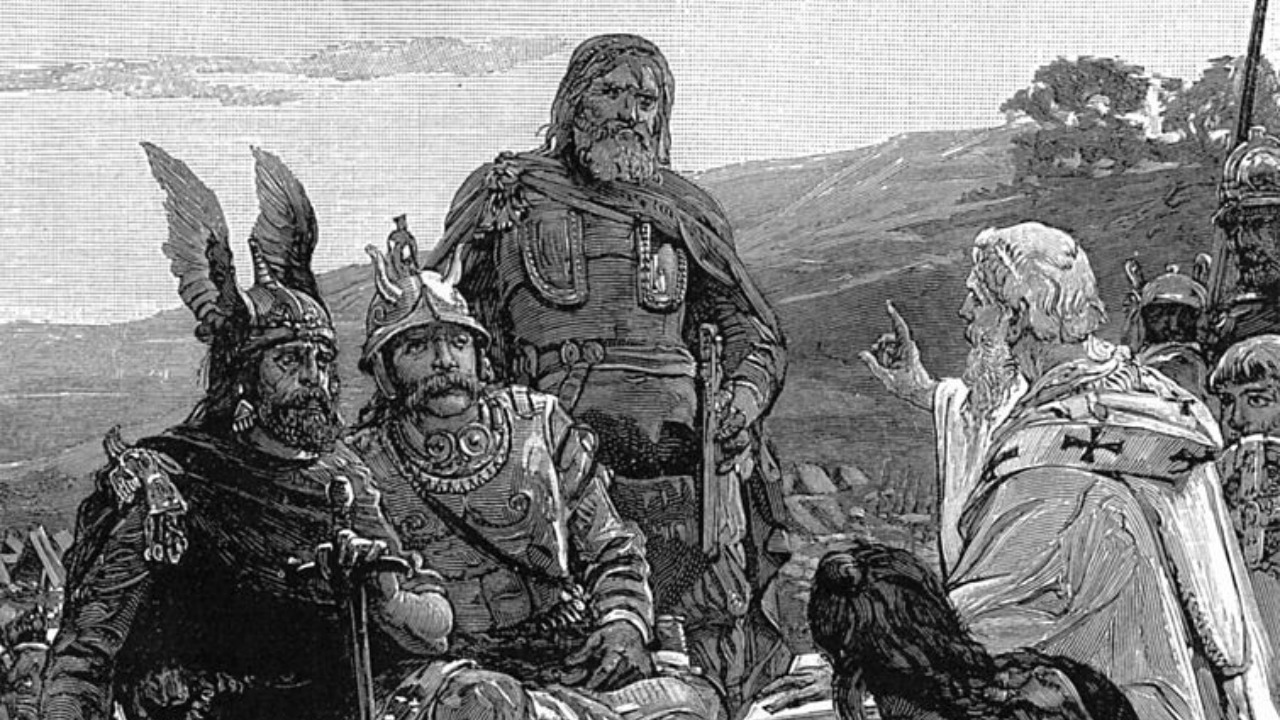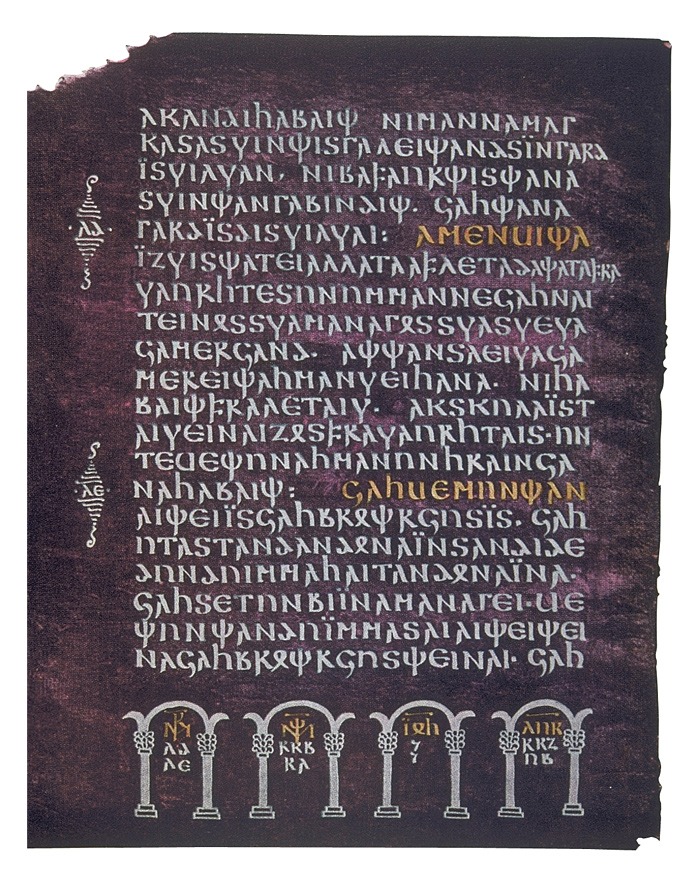The Greek Who Created the Early German Alphabet - GreekReporter.com (original) (raw)

Ulfilas, depicted converting the Goths, for whom he would later create an early German alphabet based on contemporary Greek. Credit: James Steakley / Public domain / Wikimedia Commons
The ancient Greek and German languages may seem worlds apart, but it was a Greek bishop and Christian missionary named Ulfilas who played a surprisingly important role in the codification of the early German language into a written system.
Ulfilas was a Goth of Cappodian Greek descent alive in the 4th century AD. He preached among the Goths, an ancient Germanic people, converting many of them to the Arian branch of Christianity.
Another important achievement of Ulfilas was his creation of Gothic – an early German language – in literary form, drawing extensively from his knowledge of Greek and Latin.
Who were the Goths?
The ancient Goths were an ancient Germanic people who played a decisive role in European history during late antiquity and the early Medieval period. Their exact origins are uncertain, but according to the 6th-century historian Jordanes, who may himself have been a Goth, they may have originated in Scandinavia.
In any case, the Goths spread out across Europe, particularly in the 4th and 5th centuries AD. They were at times allied to the Roman Empire as foederati, but also posed an existential threat to the Western and Eastern Roman Empires during the period of late antiquity.
The most famous Gothic figure remains Alaric I, the king of the Visigoths. In 395 AD, Alaric invaded Greece and sacked Piraeus, Corinth, Megara, Argos, and Sparta. Later, in 410 AD, Alaric made war upon the western half of the Roman Empire and sacked Rome itself.
The influence of Greek on German literary language
According to Philostorgius, a 4th and 5th century church historian, Ulfilas, whose name in Gothic was likely Wulfila, meaning “Little Wolf”, was born to parents of Greek origin from Cappadocia.
In 264 AD, Ulfilas’ parents appear to have been captured by the Goths in the village of Sadagolthina in Cappadocia. From there they were taken as captives to an area of Gothic settlement around the Danube. Ulfilas was subsequently raised as a Goth; however, according to historians Noel Harold Kalor and Philip Edward Philips, he was later able to learn both Greek and Latin.
For a period of time, Ulfilas left the Goths and went to Constantinople on some kind of ecclesiastical mission, perhaps to receive clerical training, although the exact nature of this journey and when it happened is not entirely clear. In any case, he came under the influence of the Arian Christians and was made a bishop by Eusebius of Nicomedia, the Arian priest who baptized Constantine the Great on his deathbed.

Page from a 5th century AD Gothic Bible. Credit: Asta~commonswiki / Public domain / Wikimedia Commons
Now an ordained bishop, Ulfilas returned to the Goths and began preaching. Over a seven year period he converted many of the Goths to the Christian faith, but he was expelled in 348 AD. He likely fled from religious persecution, as Gothic chiefs such as Athanaric, chief of the Thervingi Goths, feared the spread of Christianity would subvert Gothic culture.
Ulfilas fled to the Eastern Roman Empire with a group of religious converts and translated the New Testament and substantial amounts of the Old Testament into Gothic from the original Greek texts.
In order to produce a Gothic translation of the Bible, Ulfilas had to devise a new alphabet, which he largely borrowed from Greek. Indeed, scholars such as Wilhelm Braune have noted the similarities between the Greek alphabet and the Gothic alphabet devised by the Arian bishop.